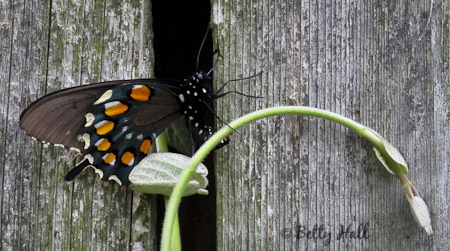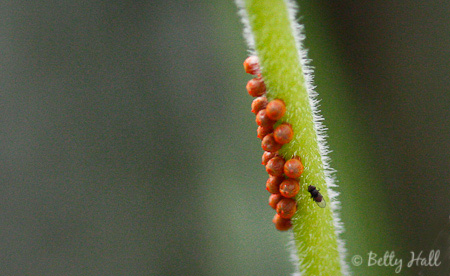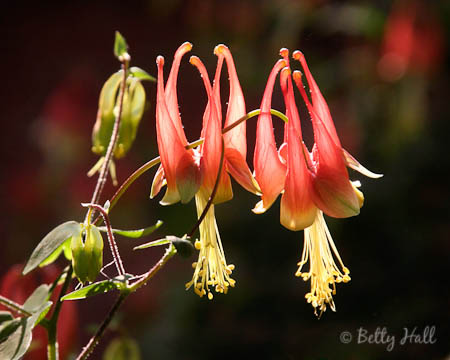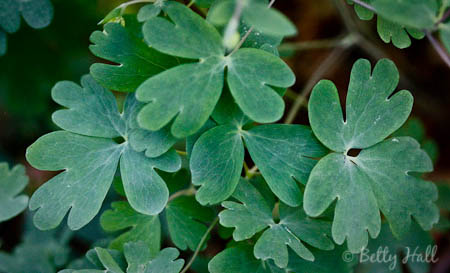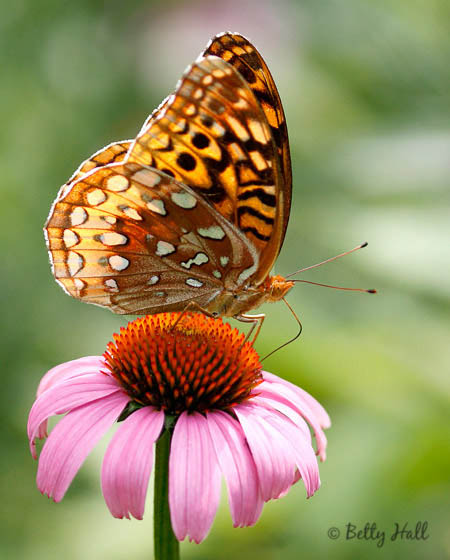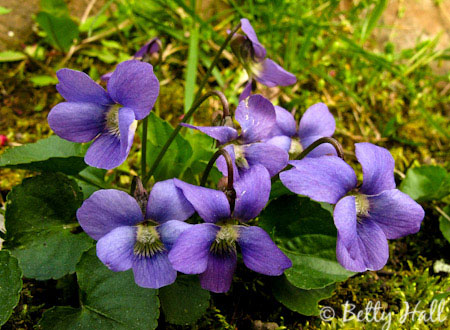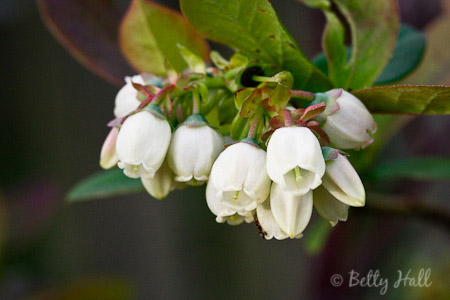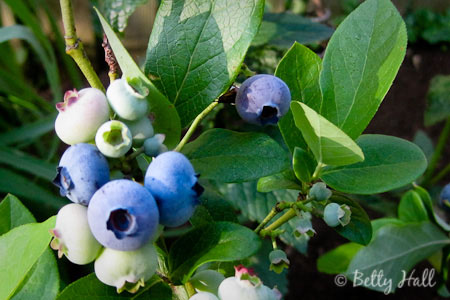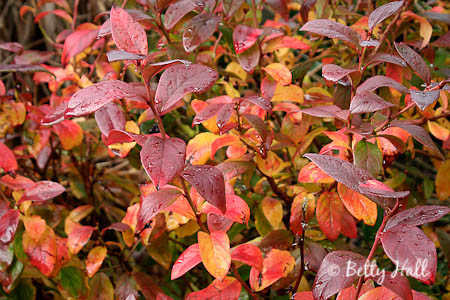What a nice surprise! I was working in the garden last Tuesday, May 10, and was delighted to see a Monarch butterfly (Danaus plexippus) near some Common Milkweed (Asclepias syriaca). I suspected she was laying eggs. Sure enough, I later found two tiny white eggs and two more on nearby Swamp Milkweed (Asclepias tuberosa).
I’ll never forget the first time I saw and photographed a monarch laying eggs. This image was taken Easter Sunday, April 15, 2006 in our backyard.
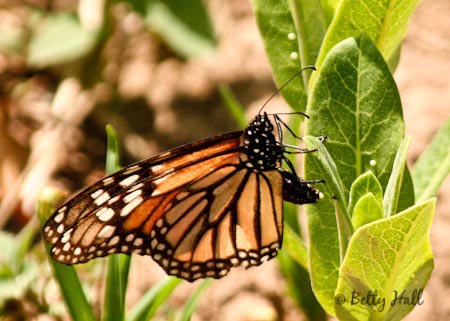 Watching her place the tiny white eggs from the tip of her abdomen on the small milkweed plant was a memorable experience, and the beginning of my gratifying butterfly journey.
Watching her place the tiny white eggs from the tip of her abdomen on the small milkweed plant was a memorable experience, and the beginning of my gratifying butterfly journey.
I planted milkweeds because I knew they are the only plants Monarchs will lay eggs on. Even though I’ve seen eggs every year since 2006, the first ones of the season always seem extra special.
I brought three of the new eggs inside, and only four days later I was surprised to discover that tiny caterpillars had emerged. I’m happy to report they are eating, pooping, getting larger and are now the size of very, very tiny ants. It will be fun to watch them grow.
I haven’t managed to photograph the caterpillars yet, but I look forward to sharing them with you in the near future.

